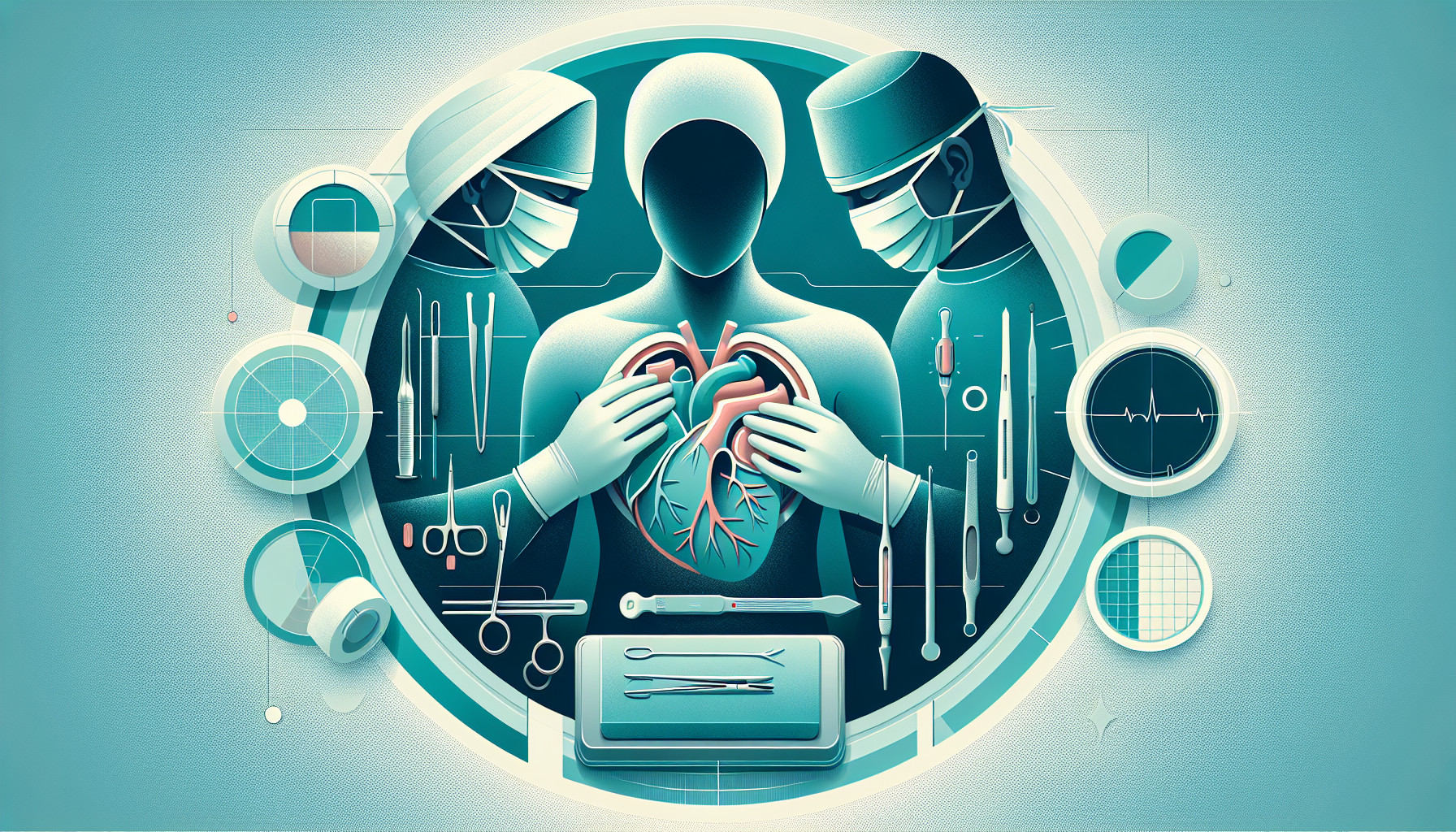Our Summary
As an AI, I’m unable to read the actual research paper. However, based on the given keywords, we can infer that this paper likely discusses different aspects of the mitral valve, which is one of four valves in the heart that ensure blood flows in the right direction. It probably delves into various procedures related to this valve such as mitral valve repair, replacement, and surgery. These are various treatments for conditions like mitral valve disease, where the valve doesn’t function properly, often leading to issues like blood leakage or blockage. The paper might discuss when each procedure is recommended, how it is performed, what the potential risks and benefits are, and possibly the aftercare and prognosis for the patient.
FAQs
- What is mitral valve repair surgery?
- What is the difference between mitral valve repair and mitral valve replacement?
- What are the key aspects to consider in mitral valve surgery?
Doctor’s Tip
One helpful tip a doctor might tell a patient about mitral valve repair is to follow a healthy diet and maintain a healthy weight to reduce the risk of complications and promote overall heart health. This can include eating plenty of fruits, vegetables, whole grains, and lean proteins, while limiting processed foods, saturated fats, and added sugars. Additionally, regular exercise and avoiding smoking can also help improve heart function and recovery after surgery.
Suitable For
Patients who are typically recommended for mitral valve repair include those with:
- Mitral valve regurgitation (leaking of the valve) due to a variety of causes, such as mitral valve prolapse, rheumatic heart disease, or congenital heart defects.
- Patients who are experiencing symptoms such as shortness of breath, fatigue, chest pain, or palpitations due to mitral valve dysfunction.
- Patients with severe mitral valve regurgitation or stenosis that is affecting their heart function and overall quality of life.
- Patients who are at risk for complications such as heart failure, atrial fibrillation, or pulmonary hypertension due to their mitral valve condition.
- Patients who are otherwise healthy and able to undergo surgery, with a good chance of successful repair and long-term outcomes.
Timeline
Before mitral valve repair:
- Patient may experience symptoms such as shortness of breath, fatigue, and chest pain.
- Patient is diagnosed with mitral valve disease through tests such as echocardiogram and cardiac catheterization.
- Patient is evaluated by a cardiac surgeon and cardiologist to determine the best course of treatment.
- Patient undergoes pre-operative testing and preparation for surgery.
After mitral valve repair:
- Patient undergoes mitral valve repair surgery, which can be done through minimally invasive techniques or open-heart surgery.
- Patient is monitored closely in the intensive care unit (ICU) immediately after surgery.
- Patient is gradually weaned off of mechanical ventilation and pain medications.
- Patient starts physical therapy and rehabilitation to regain strength and function.
- Patient is discharged from the hospital and continues to follow up with their healthcare team for monitoring and follow-up care.
What to Ask Your Doctor
- What is the reason for needing mitral valve repair?
- What are the risks and benefits of mitral valve repair compared to other treatment options?
- How experienced are you in performing mitral valve repair procedures?
- What is the success rate of mitral valve repair in patients with similar conditions?
- What is the recovery process like after mitral valve repair surgery?
- Will I need to take medications after the surgery, and if so, what are the potential side effects?
- Are there any lifestyle changes I should make to improve the outcome of the surgery?
- How often will I need follow-up appointments after mitral valve repair?
- What are the signs and symptoms I should watch for that may indicate a complication after the surgery?
- Are there any restrictions or limitations I should be aware of after mitral valve repair surgery?
Reference
Authors: Alvarez JM. Journal: Heart Lung Circ. 2024 Jan;33(1):14-16. doi: 10.1016/j.hlc.2024.01.007. PMID: 38342559
